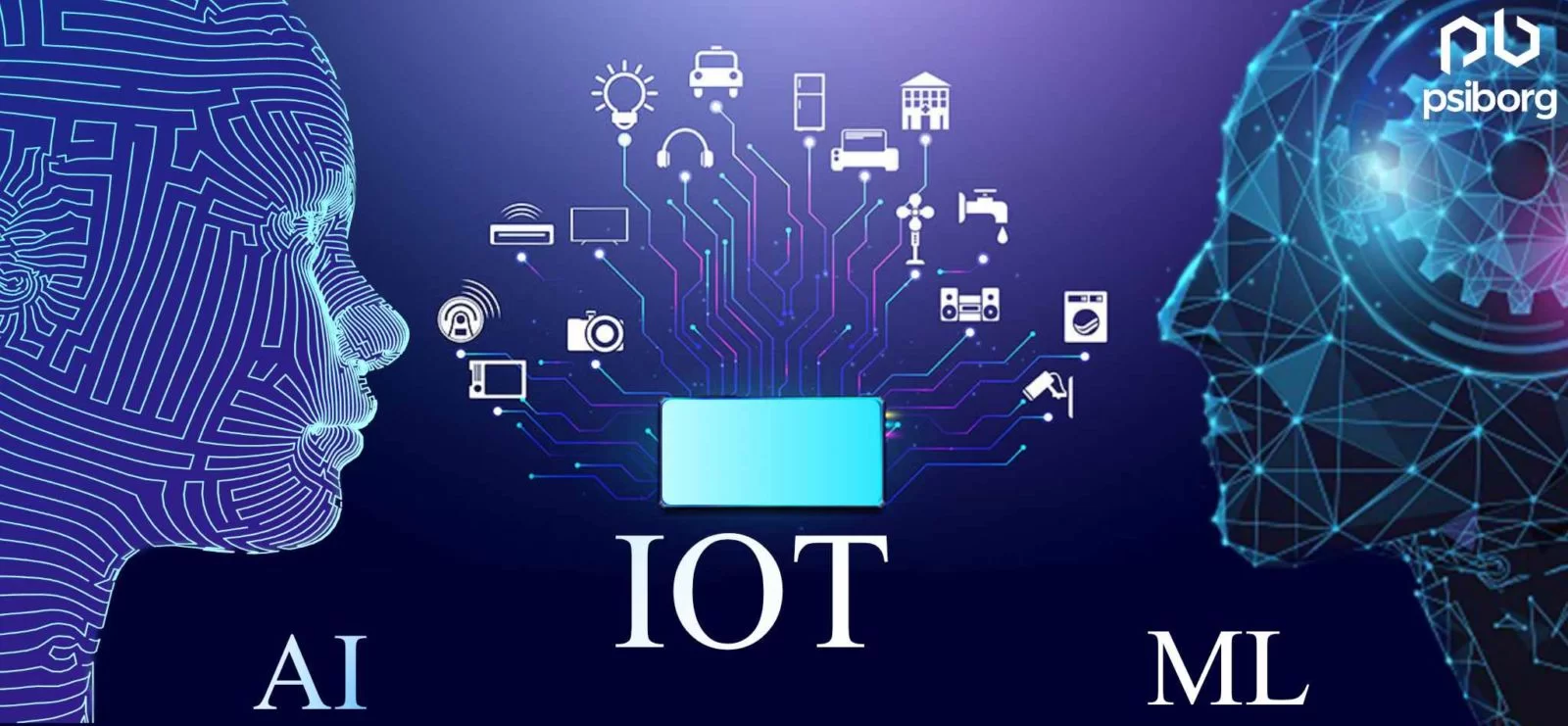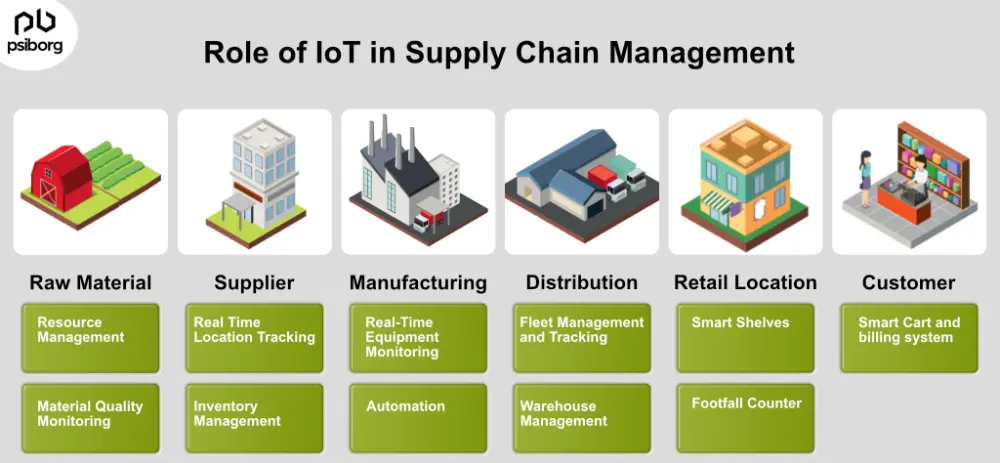IoT or the Internet of Things is gradually making inroads into most dimensions of our lives. It’s making our lives simpler. Still, we have no idea of how well things can turn out to be when AI/ML and IoT act in tandem. IoT product development with AI and ML can potentially revolutionize IoT implementations.
Although AI, ML, and IoT are related concepts with certain overlapping features, they are still quite different from one another. Here’s how.
INTERNET OF THINGS, ARTIFICIAL INTELLIGENCE (AI) AND MACHINE LEARNING
ARTIFICIAL INTELLIGENCE (AI)
AI is defined as the ability of a machine to imitate human behaviour in terms of intelligent thinking and decision-making. Artificial intelligence is typically classified into two types:
Applied Artificial intelligence (AI) and General Artificial intelligence (AI)
Applied AI has a greater resemblance to human behaviour and characteristics. It can be perceived as a system that deploys its intelligence to fulfil particular requirements. General AI, on the other hand, exhibits some strong and discernible human intelligence. Making it fit to perform tasks that a normal human is expected to do.
General AI equips a machine with nearly or better intellectual ability than a human being. Such AI-powered machines can sense and think like humans. General AI technology is now being used to accomplish common human actions. Such as identifying and differentiating between objects, strategizing, planning, debugging, and understanding and responding to speech and language.
Applied AI is used to fulfill tasks that demand better precision, skill, or expertise than humans. These days Applied AI is being used by technology and social media firms such as Facebook, Pinterest and more. Facebook uses an applied-AI-powered system for facial recognition. Whereas Google Lens uses the same technology for image search on the internet.
MACHINE LEARNING
Machine Learning is often viewed as a part of Artificial Intelligence. Machine learning is a technology that enables amazing tasks that Artificial intelligence (AI) is able to accomplish. These tasks include the identification of images and natural language processing. The idea behind machine learning is deploying beautiful and ingenious algorithms to classify data and make data-based decisions/suggestions, or predictions.
The basic aim of machine learning is to save time and improve accuracy. Also, the effectiveness of human decision-making by training machines through careful data analysis. It has a wide range of applications in multiple fields, such as health, automation, natural language processing, etc. This requires that the machine be provided with sufficient data and also fed with the right algorithms.
HOW ARE AI AND ML RELATED?
Machine Learning (ML) is a term used interchangeably with AI, but it is, in fact, a subset of AI. Machine learning is a type of Artificial Intelligence system that can acquire knowledge and learn by itself based on algorithms. In other words, systems whose knowledge and smartness increase over time are referred to as Machine learning systems.
Deep Learning (DL) is a type of machine learning system wherein large data sets are used. Almost all work done in AI systems makes use of machine learning, i.e., intelligence built over time.
INTERNET OF THINGS (IOT)
The Internet of Things refers to devices that are connected through a network, such as WiFi, Bluetooth, LPWAN etc. Including communicating with each other through seamless data transfer and exchange.
The devices we mentioned here can include everything from smartphones to home appliances. Such as air conditioners, washing machines, wearable devices, etc. IoT has wide applications, such as Home Security systems and smart homes, smart watches, Smart Agriculture, IoT-based security Devices etc. Additionally, it opens the doors to an unlimited number of possibilities, some of which we may not be able to visualize today.
Now that we have a fair bit of information about what IoT, AI, and ML are all about. Let us understand the growing need to integrate AI/ML technologies with IoT.

Suggested Reading: M2M COMMUNICATION AND CONNECTED DEVICES
NEED FOR AI/ML IN IOT PRODUCTS/PLATFORMS
IoT-enabled devices receive data from the sensors placed in the system. The main reason why we need to integrate AI and ML with IoT is the massive increase in data. This data has to be processed from IoT devices to get actionable insights and patterns for predictive analysis and behaviour of the connected devices. Integrating AI/ML with IoT platforms has reduced the chances of any data being missed. This, in turn, has improved the quality of predictive modelling of IoT-connected devices, increasing their efficiency and performance.
There are many IoT platforms that work by analyzing only a limited quantity of data. In other scenarios, such as a health tracking system, we need infinite data to improve the accuracy of the predictive models. Hence, an IoT platform where the quantity of data to be processed carries a limit is not too useful in certain scenarios.
Typically, IoT platforms work with pre-defined standards and parameters, and as a result, their performance does not improve over time. It shows here that an AI/ML-integrated IoT platform can come in handy.
IBM Watson is IBM’s AI-enabled IoT platform that leverages the power of Artificial Intelligence and IoT to provide solutions to business, healthcare, space tech, entertainment, and other sectors. Built initially as a question-answering machine that used advanced natural language processing (NLP), information retrieval, knowledge representation, automated reasoning, and machine learning technologies. The platform’s capabilities have expanded to take advantage of newer tools such as IBM Cloud, better machine learning technology, and optimized hardware. IBM Watson is no longer merely a question-answering (QA) supercomputer, but a platform that is being used to drive business, improve healthcare, and aid research.
Today, IBM Watson is used by OmniEarth to analyze satellite and aerial imagery to infer and help optimize water usage by households. IBM Watson is also increasingly being used in the health care sector for predictive medicine and clinical decision support systems.
IOT PRODUCT DEVELOPMENT WITH AI AND ML TRENDS IN COMING YEARS
The rapid development taking place in the technology field is improving the quality of our lives as well as benefiting businesses in ways not imagined earlier. Here’s a look at how AI and ML are changing the technology landscape today.
IOT-BASED DATA PROCESSING
The fact that IoT connects devices behind a firewall is a major demerit. This may compromise the security of IoT devices. Hence, in the coming years, a major focus will have to be on adding a relevant security framework between the network and app,besides linking the IoT-connected devices.
BETTER CONSUMER ADOPTION
The years to come will see a major shift in the use pattern of IoT. From consumer IoT devices, the world is likely to see greater adoption of IoT in the industrial processes and system IoT-based predictive maintenance of industrial equipment is an example of this. There are many companies that are already adopting Industrial IoT (IIoT) to improve their process efficiency and productivity.
IOT AND SMART HOMES
As the urban standard of living goes up, people in the cities are looking to install smart home systems in their homes. These technologies encompass areas such as smart lighting, smart air conditioning, and ventilation. Various smart voice assistants such as Alexa, and Google voice assistants already provide interconnectivity of your home devices using the IoT technology. And this is just the beginning.
ADOPTION OF IOT TECHNOLOGY IN THE HEALTHCARE SECTOR
Various IoT devices such as wearable smart watches, wellness tech devices, etc are being used to collect and track crucial patient health data to improve wellness through IoT technology. One of the brightest possibilities for the use of IoT in the healthcare sector is telemedicine. It will aid in supporting activities such as patient data record keeping, accessing reports from multiple locations remotely, etc.
EXAMPLES OF AI/ML IN IOT-POWERED PRODUCTS/PLATFORMS
As already discussed, AI/ML technologies are being used in various IoT products such as smart homes, smart voice assistants, telemedicine, wearable health and wellness devices, predictive maintenance systems in the industry etc.
Also, Read IoT and Logistics.
Conclusion
AI/ML and IoT are individually innovative technologies with remarkable capabilities. But, when they act in a symphony it creates magic. It is able to take care of the limitations of limited data-based IoT products and platforms to give a performance that improves with time.
Every IoT product development company today is increasingly looking at leveraging AI and ML in IoT product development. Areas such as healthcare, smart Agriculture, and others need exactly this. Therefore, the future of the integration of AI/ML with IoT is quite bright.






